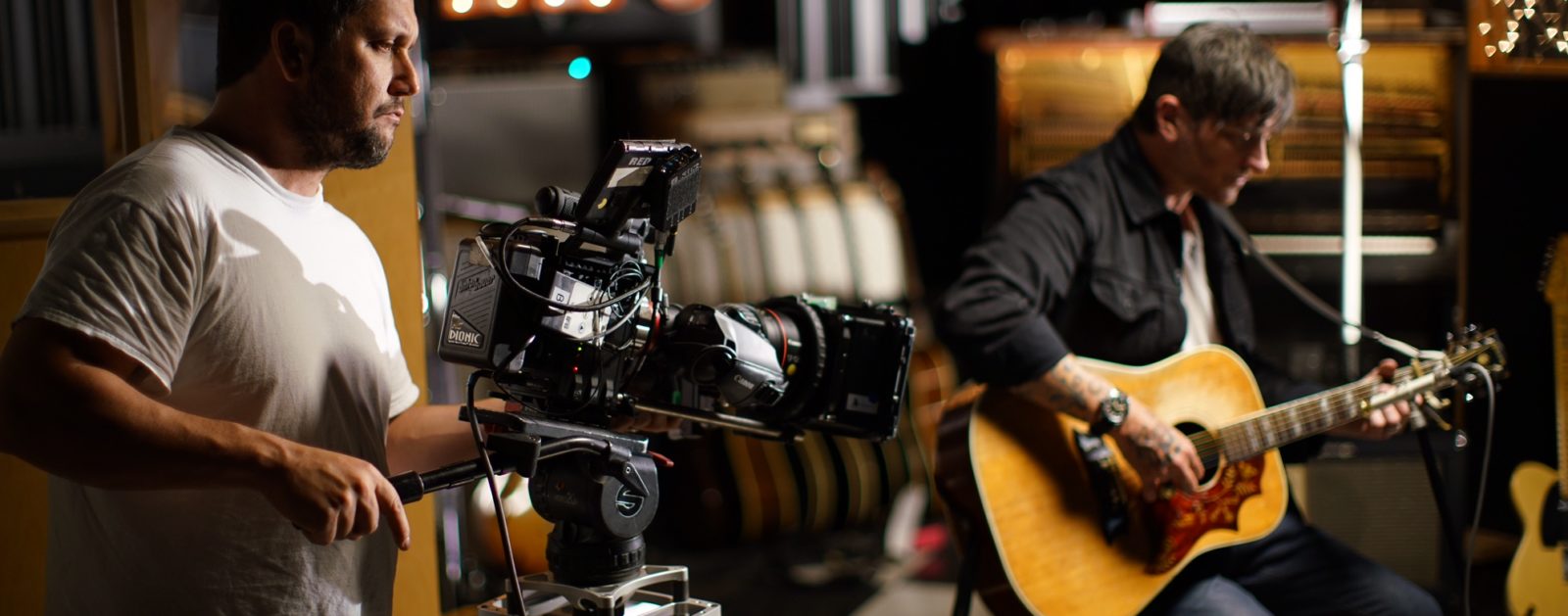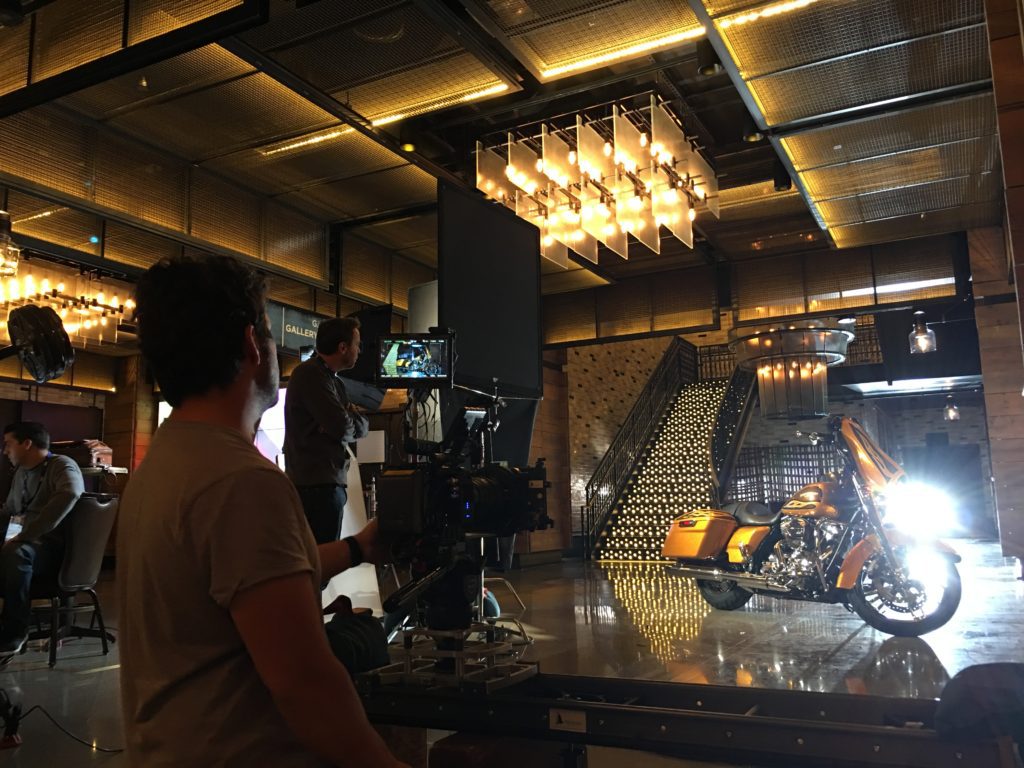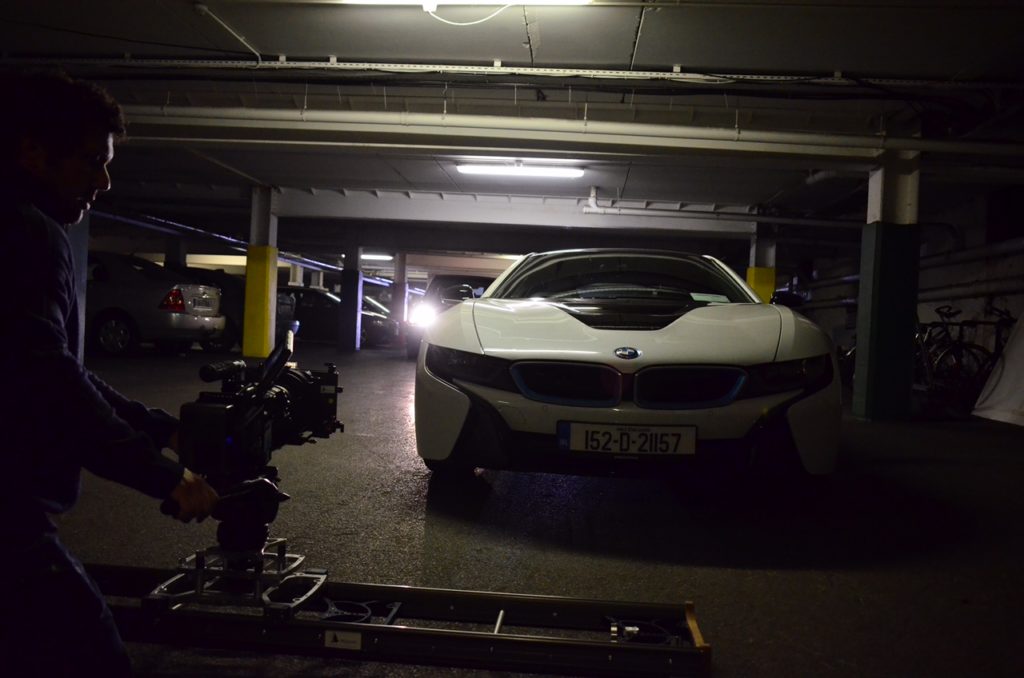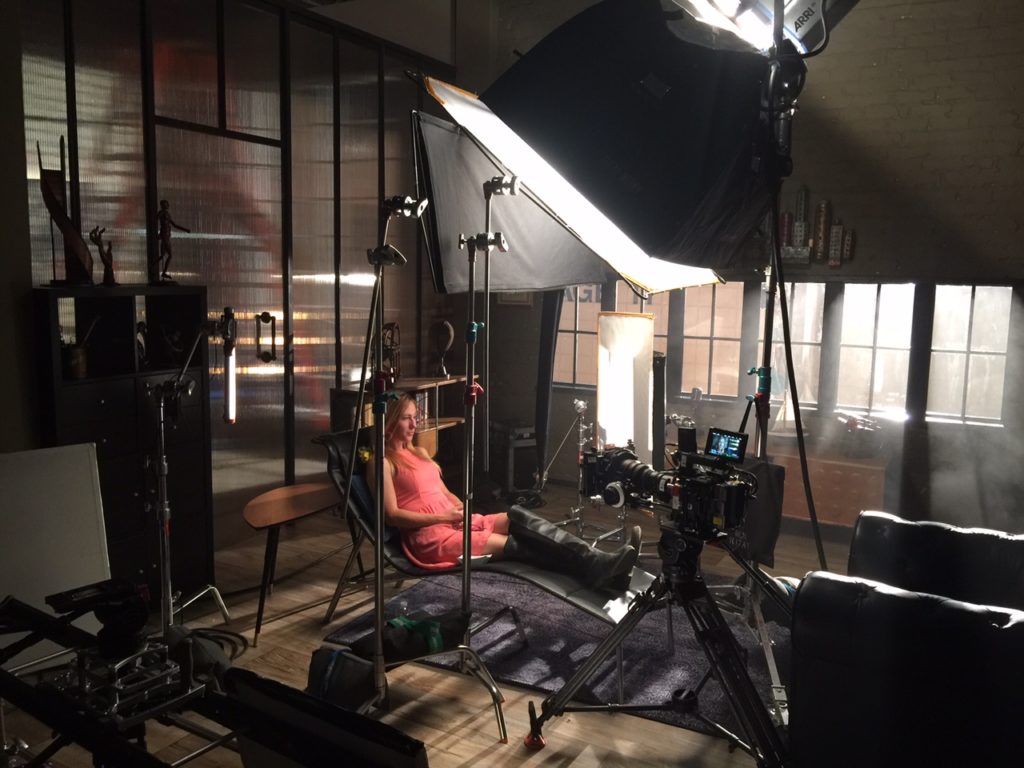

Tell us about Belinski Media and how you got started.
I have been a Director of Photography for 23 years, and I have owned my company, Belinski Media, for over 10 years. I started the company because I was required to incorporate in order to DP a big shoot, but this has been something I had been thinking of doing for years. We are a small company located on both coasts, with only 3 full time employees, but we are extremely adept at scaling-up for large productions.
We shoot mostly high-end productions, working across a wide array of genres, including sports, food, and music, commercials, and the occasional feature. For example, we just shot a number of pieces for the Super Bowl in Houston, including the open for the Super Bowl pre-game show and the open to the Super Bowl game itself. We have been nominated for numerous Emmys, including Best Sports Cinematography in 2015, and have subsequently taken home multiple Emmy Awards.
At a fairly young age I knew I wanted to work in Television and Cinema. I went to NYU film school, and I immediately gravitated towards cinematography, while most of my classmates wanted to write and direct. Therefore, I was able to get a lot of experience shooting everyone’s projects because most of them were less focused on that aspect of production. By the time I graduated, I had built up a halfway decent reel, and I worked right out of school because I learned from all of the mistakes I got to make along the way before a paycheck depended on it. It wasn’t all glitz and glam as my first break was being a Production Assistant on summer camp videos and corporate/industrials with a very cool company called David’s Productions in NJ. I owe a lot to their belief in me at a very young age. I just never stopped shooting and always approached each project, no matter how big or small, like it was the Super Bowl…. And eventually it was!
What was the key to your success?
I believe one of the biggest keys to success is the willingness to work hard. When a shoot day is over, I usually continue to work for hours. Since I am a perfectionist, I often personally color correct the footage after shoots. I do this even when I know a terrific post house is going to handle the finished product because it helps me learn how far I can push what I’m doing. I also review and edit my own footage multiple times even though a well-known editor with far better skills is ultimately going to do the final. I’m always watching for what we did right and what we did wrong, how did these angles cut together, etc, to see how we can improve the next day. You must be a little bit crazy and obsessed. It also helps to have a wife that is supportive since there’s lots of travel and insane hours. I wouldn’t want to live with me.
What is your advice to Cinematographers?
Realize your time on set is short. Cinematography is a small percentage of filming and large percentage of planning, scouting, conference calls, invoicing, marketing, completing mundane tasks, pre-production, hiring crew, and developing relationships. I can’t say enough that the actual shooting is a very small part of it. It accounts for the most rewarding moments, but they are also few and far between. That’s one piece of advice I would give to newcomers that I don’t think is emphasized enough in most film programs.
Then, there are always time challenges, space challenges, set challenges, and personality challenges that you must navigate, but it does get easier over time. You are required to communicate with the executive producers, the producers, directors, gaffers, camera department, VFX, post, hair, makeup, grips, and pyro on occasion, just to name a few. Each of these positions are essential to the creative process, but they often speak different languages and as the DP, you are the bridge and must communicate well with all facets of production. That’s essential. You must also use muscles that you never thought you had. Then you must manage money, safety, monitor the budget, and still make sure everyone is happy, which is perhaps most important. A happy set produces better content almost every time in my experience.
Where do you buy your gear?
I shop all over on both coasts, NY and LA – B&H, Film Tools, Band Pro, Abel Cine, etc. When it comes to camera sliders, for my work I’ve found MYT Works is the best fit for me. I know there are some more expensive systems out there, but they take too long to set up for my line of work. They are not practical for the average user; they’re just not as intuitive or portable for my style. MYT Works has the best slider that’s mobile, in my opinion, because it’s also durable and versatile. I travel a lot, so I have gone through 3 of the soft cases. Now that I know there are hard cases I am certainly interested in acquiring those. I fly often with my original MYT Works slider, and I need to have it; another slider won’t do. I love how modular it is. I can throw it down and be ready in seconds. Also, if I break something, they can send me the parts, and we can fix it in the field.

How did you discover MYT Works?
I came across MYT Works products about five or six years ago, when the company was first started. Our location was near the MYT Works shop, so I stopped by and met the creator. I had already tested it at Barbizon and there was some buzz around it, the new slider built out of frustration. I liked the tagline because I depend on my gear.
At the time, I was shooting lots of food shows with IW productions in NYC who consistently supported me in pushing the envelope regardless of budget and I also was shooting a lot of commercials/promos for DirecTV and Fox Sports amongst others. The MYT Works setup was like the roller systems at the time but more well thought out. It really seemed like it was created by a DP for a DP. The design is intelligent. I can quickly move from slider to skater. It’s simple, effective, and adjusts quickly; because when opportunity knocks, you must be ready. I do repair it a lot because I am hard on my gear. I have grown attached to my first one. We have subsequently bought some of MYT works newer models and incorporate them in our shoots, but on my shoots, I prefer to have that first slider.
Tell us about what makes a challenging shoot.
Multiple factors can make a shoot creatively challenging or difficult. The open to the Super Bowl was creatively challenging. For that piece we had to consecutively shoot scenes from three wars – the War of 1812, the Alamo, and the Civil War – all in one take with cannon explosions and pyro technics.
http://belinskimedia.com/2017/02/09/the-battle-scene-making-of-ragged-old-flag/
For “The Greatest”, which opened the Super Bowl pre-game show, MYT works gear was used for tight shots; the rest was shot on a gimbal.
http://belinskimedia.com/2017/02/10/walk-with-me-making-of-the-greatest/
What industry publications do you read?
Cinematographer.com, American Cinematographer Magazine, Red User, HD Video Pro Magazine. I also like a newer publication, Cinematography Database, because I like that they break down a scene and show how something was done.
Any final words for our readers?
Another bit of advice I have for beginning operators/DP’s is to find the right blend between getting yourself on high-end shoots in whatever role you can, so you can see how state-of-the-art productions are doing things; and also finding time to shoot on your own and make your own mistakes. You must do both. When I first started my career, one day I was a PA on a corporate documentary, and the next day I was DPing a Calvin Klein shoot with Kate Moss. If you put in hard work and are persistent, it’s amazing how “lucky” you can get. Finally, as in all facets of life, surround yourself with great people – you’re only as successfully as your team allows you to be. I am tremendously grateful to have worked with so many talented people.






